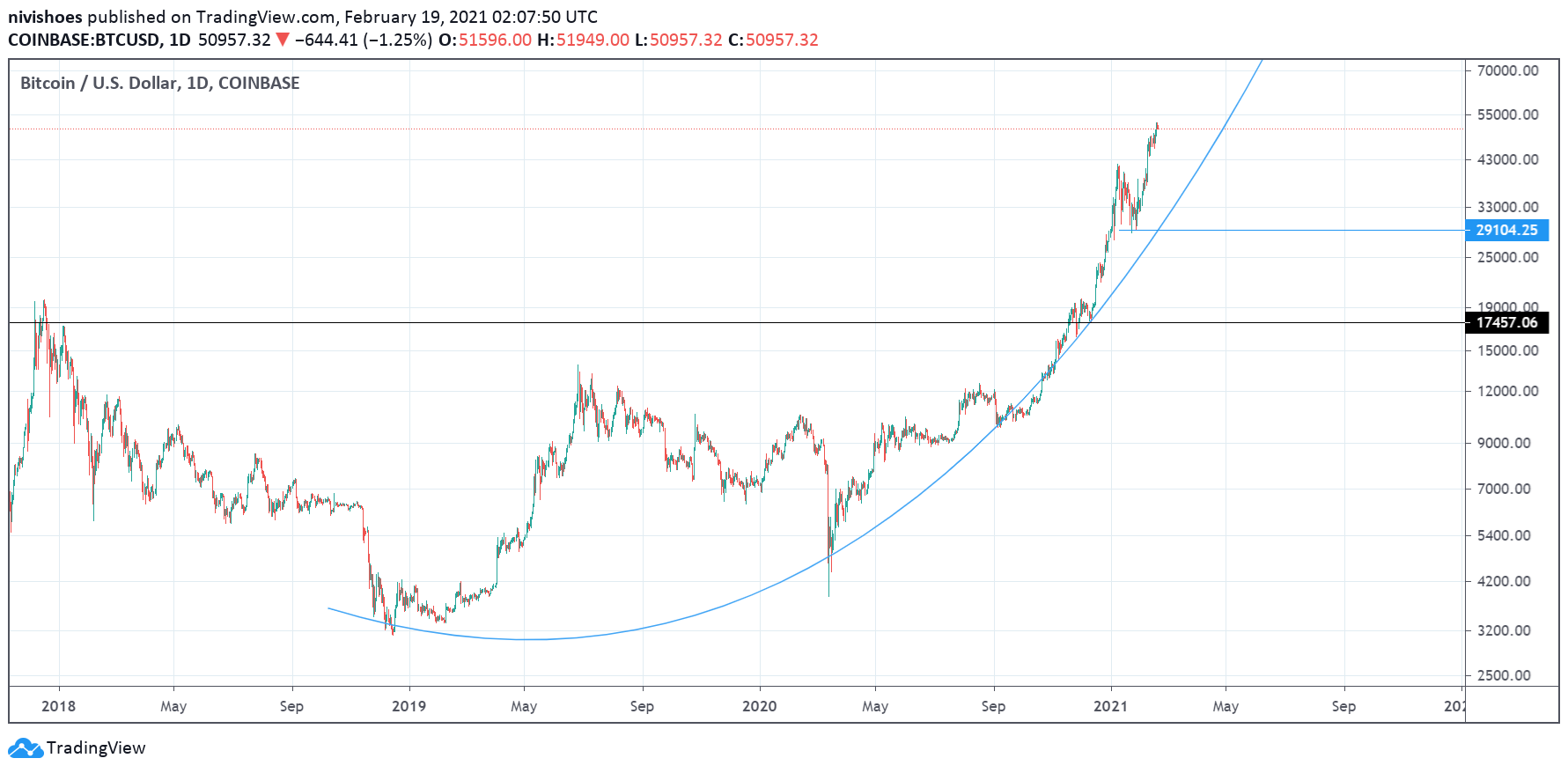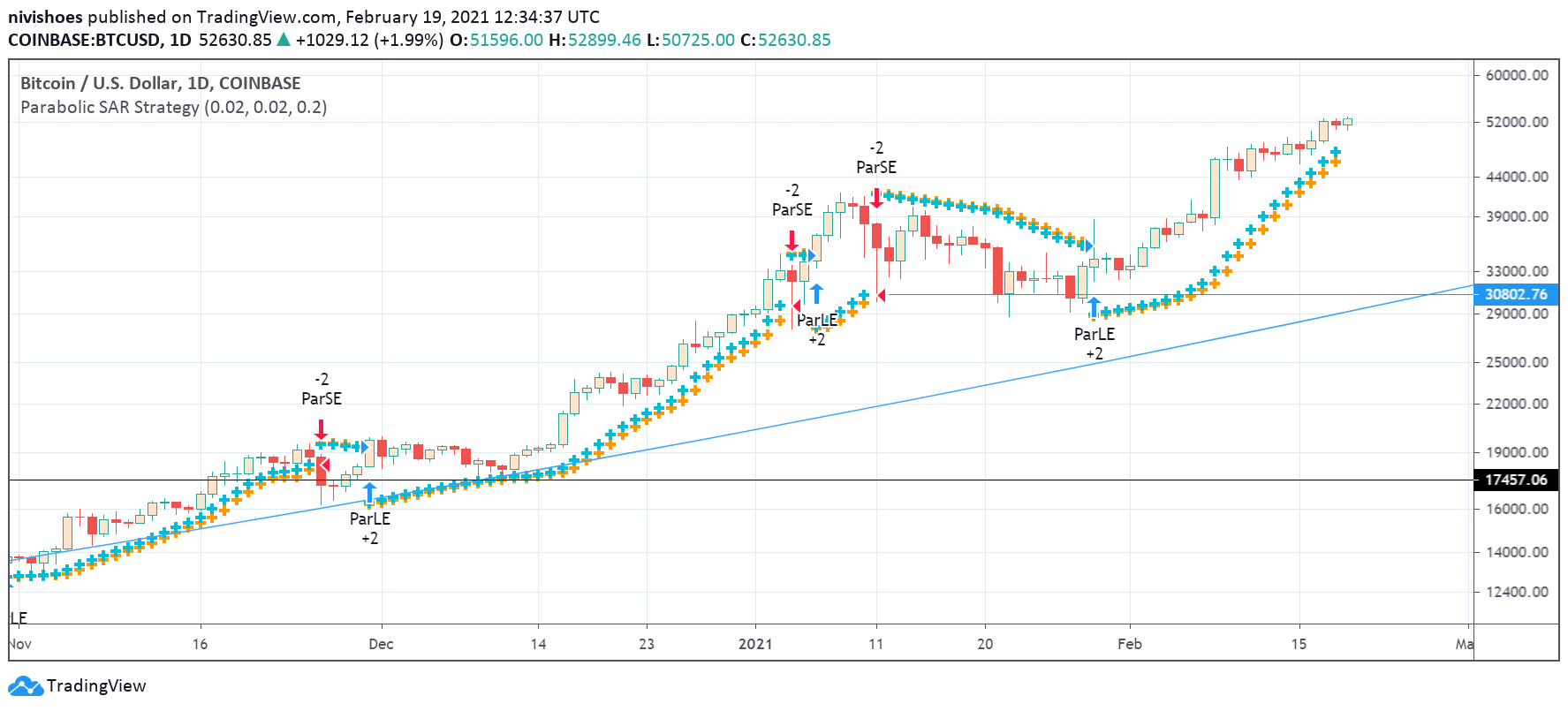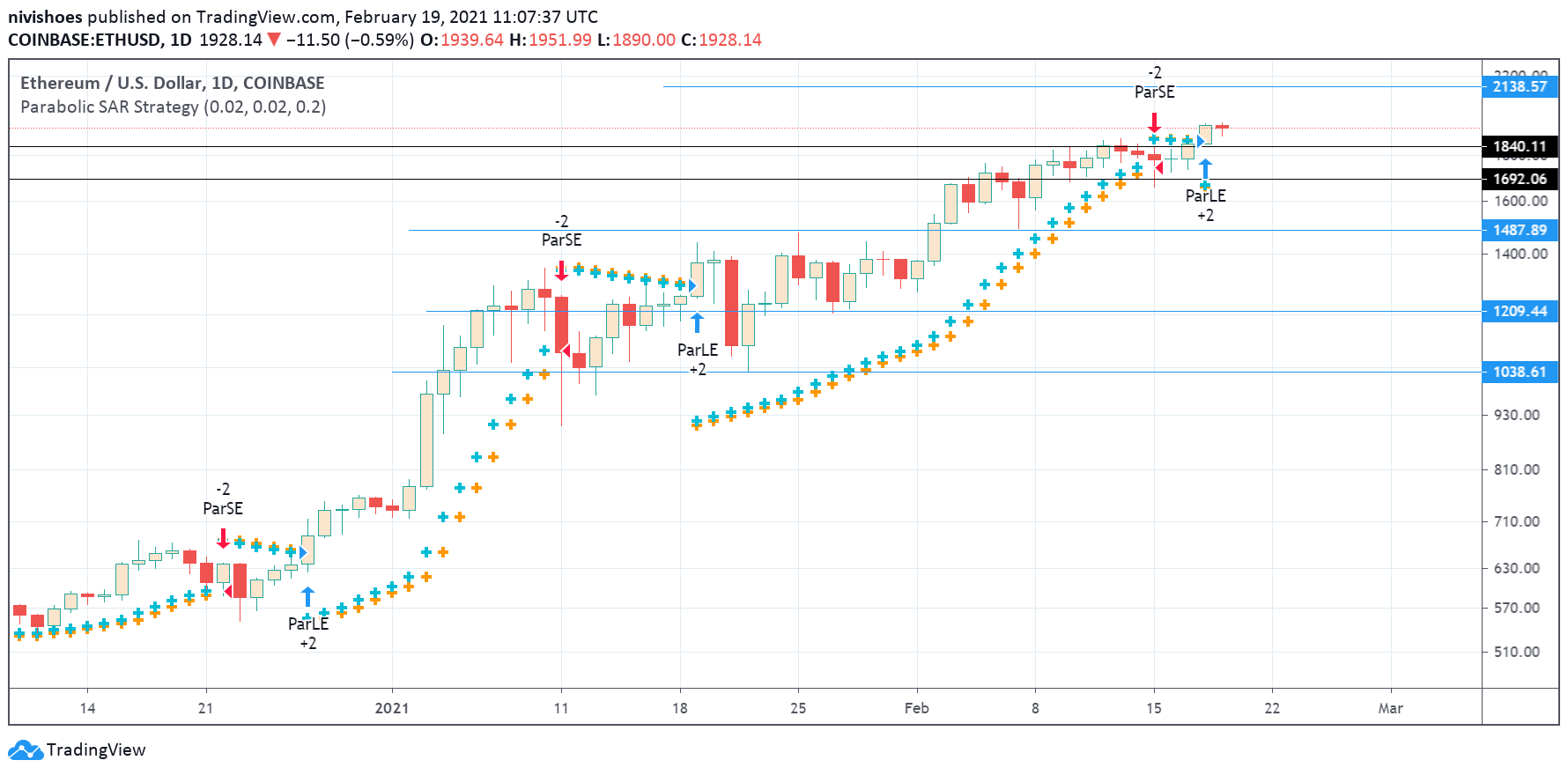wNews: What Bitcoin at $50,000 Means for the Market
High-leverage crypto news, wrapped and bundled every Friday.

Key Takeaways
- Bitcoin crossed $50,000 for the first time this week. It also hit a market cap of $1 trillion today.
- The rate of institutional adoption in Bitcoin means that it still claims the spotlight over other smaller cryptocurrencies, a trend that will likely continue through 2021.
- With DeFi growing, Crypto Briefing explains why readers should consider participating in governance voting.
Share this article
Bitcoin hit $50,000 this week, nine weeks after crossing $20,000 for the first time.
Institutional Adoption Picks Up Pace
A wave of mainstream interest in Bitcoin has helped fuel its biggest run to date. According to JP Morgan analysts, speculative “retail impulse” could be the main driving force behind the run. That, they concluded, could be an indicator that a correction is coming.
However, it’s difficult to ignore the vast corporate adoption rate the asset has received through 2020 and 2021.
This week, MicroStrategy announced its plans to invest over $600 million worth of convertible debt into Bitcoin, adding to the firm’s already massive BTC balance sheet. The announcement led to a slight dip in MicroStrategy shares but lent major buy-side sentiment in the crypto markets, with Bitcoin hitting a record $50,000 minutes after the announcement.
Corporate and institutional adoption has played a major role in the bull run, making it distinct from the ICO frenzy of 2017. In addition to MicroStrategy, which has arguably led the wave of institutional interest, major firms like Tesla and $2 trillion banking giant BNY Mellon have announced moves towards adopting Bitcoin in the last few weeks.
Tesla’s announcement of a $1.5 billion investment, along with the move to add Bitcoin as a payment option for its vehicles, added to positive sentiment in the market.
Earlier this month, the market received the news that Visa is piloting software to allow crypto trading at U.S. banks. The constant flurry of announcements from major companies has left many in the markets thinking the same thing: the era of mass adoption has finally begun.
Every high-profile institution that adopts Bitcoin makes it easier for others to follow, firmly erasing Bitcoin’s shaky reputation among the halls of mainstream finance and commerce. It’s legitimizing the leading cryptocurrency as a real-world asset at last.
Bitcoin recently overtook Tesla, Facebook, and Tencent to become the sixth-largest asset in the world with a market cap of $1 trillion, trailing giants like Apple and Amazon.
Impact on the Wider Market
It wasn’t that long ago that the crypto space would be referred to as “Bitcoin” and “altcoins,” but with billions of dollars flowing into Ethereum, DeFi, and other projects, that narrative isn’t as strong today.
However, there’s no denying which coin is leading the market. Bitcoin holds just under 60% dominance, while Ethereum trails with only 13.1%.
ETH had been outperforming BTC until this week; the ratio between the two assets hit a two-year high on Jan. 25.
However, when Bitcoin kicks into a rally, it often takes the spotlight over the rest of the market. That was evidenced this week: it’s up 14.8%, while ETH has seen a gain of only 10.1% on the same timeframe.
While plenty of smaller cap coins have also risen, the recent calls for an “alt season” have been overshadowed by Bitcoin’s rise. Aave slid 18% after making considerable ground in recent weeks, Synthetix has dropped to 30th rank on the leaderboard, and Uniswap has also dipped. In other words, any traders holding these DeFi blue chips would have been better off with crypto’s most time-tested asset.
However, the recent price action doesn’t mean the rest of the market is about to die off. Money inflows into Bitcoin have historically been positive for the smaller cap coins, and it wouldn’t be a surprise to see ETH and other projects following BTC’s lead in the near future. Plenty of smaller cap coins are still surging, even if DeFi has lost some of its steam.
Even Ethereum—the home of DeFi and NFTs—doesn’t hold the same prestige as Bitcoin, though. For now, there’s only one crypto asset that institutions are interested in. Until that changes, Bitcoin will remain “king.”
Market Action: Bitcoin (BTC)
Bitcoin is currently in a parabolic advance. When the cryptocurrency crossed $20,000 in mid-December, it hit a new all-time high three years after last reaching the level.
Veteran trader Peter Brandt has stated that three parabolic advances in an asset within a decade are among the rarest occurrences in trading history.
In retrospect, the best levels for spot buys were at $17,500 and $29,000.

The parabolic SAR indicator is one of the few tools traders use when there are no target resistances.
Developed by Welles Wilder, the metric is a beneficial trend indicator, highlighting reversal levels in a break-down from a positive or negative trend. Thus, flashing below the price in an uptrend and above in a downtrend.

Currently, the Parabolic SAR support level is around $47,000. Further downside in BTC could see a test of $31,000 by the end of next week, the parabola’s support.
According to data from Glassnode, the coin days destroyed in February moved to a one-year low in February, meaning that longer-term investors are not selling their holdings, despite the $50,000 milestone.
Bitcoin has risen 64% in February, with over a week of price action remaining. Back in 2017, February was the first of many months in which Bitcoin registered double-digit gains.
The current price action resonates more with May 2017, around the last parabola’s mid-point on a monthly scale. According to Brandt, the mid-point of the current parabola is around $42,000.
Bitcoin gained 750% from June 2017 to December’s peak near $20,000. The path saw three severe corrections before reaching all-time highs.
Sharing his thoughts on Bitcoin’s likely move on a short-term time horizon, SIMETRI analyst Nathan Batchelor said:
“Bitcoin sailed through the $50,000 benchmark level with relative ease this week. More news of company investments in BTC helped the top crypto ride the already strong tailwinds from Tesla and Mastercard. $55,000 is the next big level to watch on the charts going into the weekend. A strong pullback from this area is certainly within the realms of possibility given the parabolic advance from $40,000.”
Market Action: Ethereum (ETH)
Ethereum’s native token ETH is still on track for a target price of $2,100 after a breakout at the start of the month.
The support level for ETH is at $1,840, which coincides with the Parabolic SAR indicator on a four-hour scale. The daily metric flashed a buy signal at the breakout Thursday.

With network utilization at a peak, 100 Gwei has become the baseline gas price to use Ethereum. At 100 Gwei, the average fee to transfer ETH is around $5, while interacting with more complex smart contracts in DeFi costs considerably more.
The fee has been higher than the base level for more prolonged periods this year.
Apart from the extortionate fees, the derivatives market’s high funding rate is a crucial alarming signal that favors bears.
The average daily funding rate above 0.4% corresponds to 150% annually. It implies that long players are playing 150% annually to lend from short players. This makes shorting lucrative and creates an avalanche effect on price.
Still, sustained high funding levels imply that the market has become comfortable in the current dynamics.
The current key price action depends on how strongly buyers react to a downside and if consolidation below $2,000 continues. Nathan Batchelor said:
“Ethereum may have a date with destiny over the weekend as it approaches the $2,000 level. My chart says $2,400 or $1,400 next. So this is a big deciding moment for ETH in the short to medium-term.”
Crypto To-Do List: Vote in DeFi Governance
Decentralized ownership is inherent to crypto. It started with Bitcoin in 2009, and the same ethos underpins the DeFi movement that’s flourishing today.
Protocols like Uniswap, Synthetix, and Yearn.Finance have eschewed more centralized governance structures in favor of handing ownership to the community, which has, in turn, contributed to their success.
Many of these protocols have achieved decentralization by launching their own tokens, often distributing to those who participate in activities like yield farming.
Many teams have given away generous airdrops.
While there might be a temptation to exchange tokens for another asset like ETH upon receipt of a surprise payout, that misses the purpose of governance tokens altogether.
Most of DeFi’s leading protocols use tokens to help govern the future of the protocol. To vote in key decisions affecting the project, you need to have a supply of tokens you can stake.
Governance proposals are usually put forward and left to a vote between the community. This month, the Synthetix Spartan Council voted to add a synthetic Tesla stock called sTSLA to the protocol. The Yearn.Finance community, meanwhile, approved a proposal to mint 6,666 YFI.
DeFi is in its first innings, which means there’s a huge opportunity to front-run the movement. There are too many high-quality protocols to mention in this feature, but participating in governance is one of the best ways to truly embrace the power of DeFi and be a part of the change.
In DeFi, the community has a chance to steer the direction of powerful new financial infrastructure like never before. Don’t just trade tokens—get involved as much as you can while things are still early.
That’s all for this week’s edition of wNews, readers. Stay tuned for next week’s dispatch.
Disclosure: At the time of writing, some of the authors of this feature had exposure to BTC, ETH, AAVE, SNX, UNI, and YFI.
Share this article
